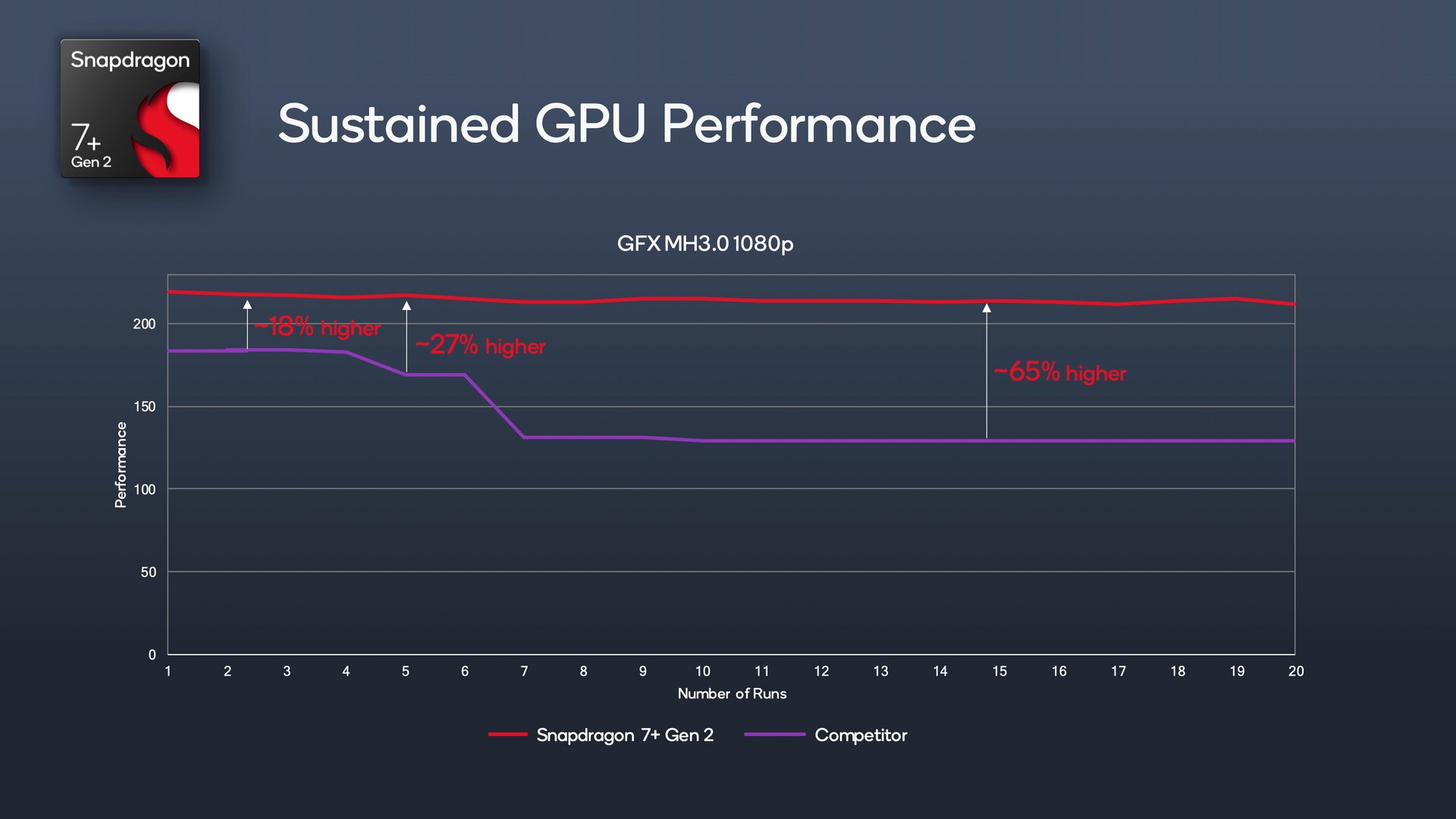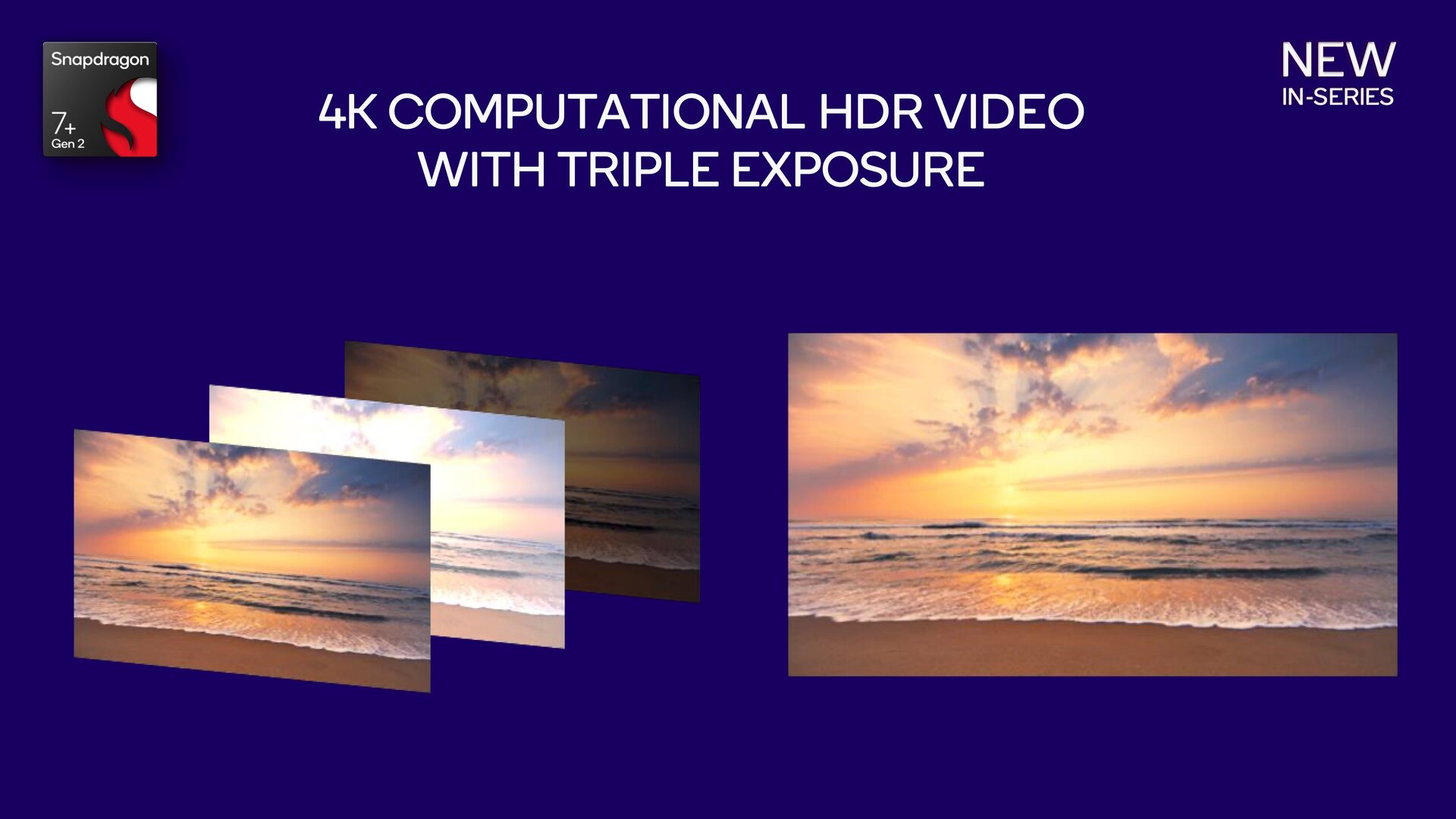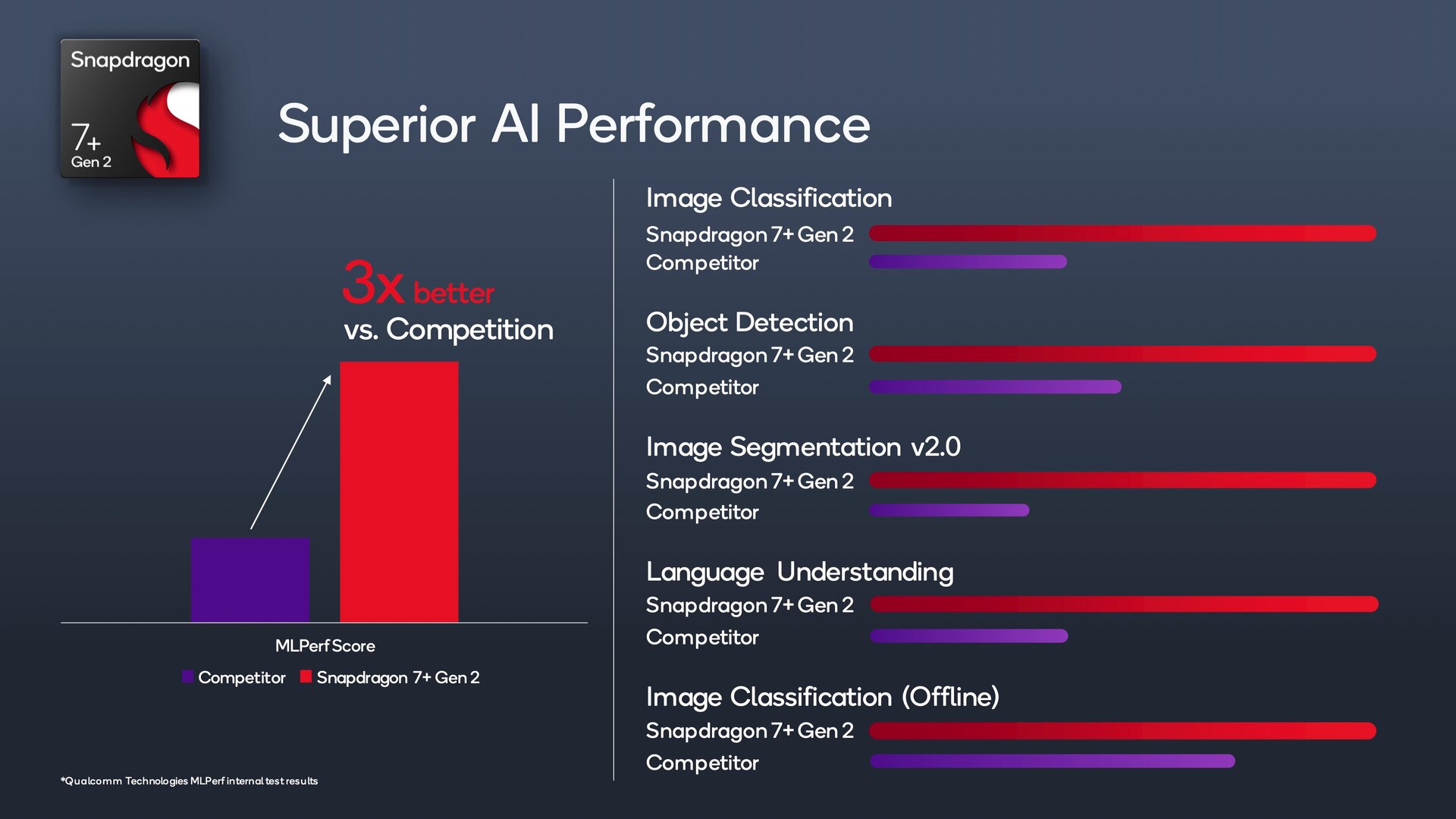Below the Snapdragon 8 Gen 2, Qualcomm is bringing a new top model in the so-called high-tier class with the Snapdragon 7+ Gen 2. Like the flagship, the system-on-a-chip is produced by TSMC in 4 nm and is said to deliver 50 percent more CPU and 100 percent more GPU performance compared to the Snapdragon 7 Gen 1.
According to Qualcomm, the first smartphones with the Snapdragon 7+ Gen 2 will be presented and launched by Redmi and Realme this month.
First Cortex-X core in the high-tier class
The new chip generates the immense increase in performance compared to the Snapdragon 7 Gen 1 via a new prime core based on the Arm Cortex-X2 with up to 2.91 GHz. So far, Qualcomm had chosen one of the four Cortex-A710 for the Snapdragon 7 Gen 1 and operated it at 2.4 instead of 2.36 GHz. For the first time, Arm's largest CPU core outside of the Snapdragon 8 series is used at Qualcomm. Three performance cores based on the Cortex-A710 with a maximum of 2.49 GHz and four Cortex-A510 efficiency cores with up to 1.80 GHz complete the CPU. The very latest Arm cores X3, A715 and A510 Refresh, on the other hand, are only available in the Snapdragon 8 Gen 2.
- < figure class="gallery__figure">
 Snapdragon 7+ Gen 2 at a glance (Image: Qualcomm)
Snapdragon 7+ Gen 2 at a glance (Image: Qualcomm)
Image 1 of 4
 Overview of the new CPU (Image: Qualcomm)
Overview of the new CPU (Image: Qualcomm) Advertised advantage over unknown competitors (Image: Qualcomm)
Advertised advantage over unknown competitors (Image: Qualcomm) Sustained Performance (Image: Qualcomm)
Sustained Performance (Image: Qualcomm)
Qualcomm doubles GPU performance
On the GPU side, the chip with twice the performance shows an even bigger increase. As usual, Qualcomm is silent with technical details on the structure or clock of the GPU, but in view of the constant improvements in the GPU area, which Qualcomm recently even catapulted ahead of Apple with the Snapdragon 8 Gen 2, the specification seems quite realistic. The GPU also supports automatic variable rate shading (VRS) and volumetric rendering, while ray tracing is reserved for the Snapdragon 8 Gen 2.
Production at TSMC instead of Samsung
After the flagship from the Snapdragon 8 family, Samsung is now also losing one of its largest customers in the Snapdragon 7 series. Like the Snapdragon 8 Gen 2, Qualcomm has the Snapdragon 7+ Gen 2 manufactured by TSMC in 4 nm, after Samsung's 4LPE process has been used up to now. This has a corresponding effect on the efficiency, which, according to Qualcomm, has improved by 13 percent for the entire platform, despite the performance increases.
New ISP for 4K HDR at 60 FPS
There are also supplies for the image processor (ISP) and the AI capabilities of the chip. The triple 18-bit ISP instead of the triple 14-bit ISP can capture a larger color range of raw data and supports 4K HDR with three parallel exposure levels per frame at 60 FPS, optionally on two cameras at the same time. The ISP, which processes 3 instead of 2.5 gigapixels per second, can process the data from three cameras with 32 MP each or two cameras with 64 and 36 MP or one camera with 108 MP with “30 FPS Zero Shutter Lag”. The maximum for a single photo is 200 MP, 64 MP photos can be taken in parallel with a 4K HDR video recording.
-
 New triple 18-bit ISO (Image: Qualcomm)
New triple 18-bit ISO (Image: Qualcomm)
Image 1 of 3
 4K HDR with three exposure levels per frame at 60 fps (Image: Qualcomm)
4K HDR with three exposure levels per frame at 60 fps (Image: Qualcomm) AI performance (Image: Qualcomm)
AI performance (Image: Qualcomm)< h3 class="text-width text-h3" id="section_sparse_sensing_hub">Frugal Sensing Hub
For the AI performance, Qualcomm calls three times the performance of an unspecified competitor – probably MediaTek or Samsung – and sees itself far ahead of the competition in areas such as image classification, object recognition, image segmentation and speech recognition. A dedicated sensing hub with its own AI processor, DSP and memory handles energy-saving processes such as evaluating the smartphone sensors in the background, always-on voice recognition for commands such as “Ok Google” and areas of connectivity.
Known 5G module, faster WiFi
Speaking of connectivity: The same 5G comes with the Snapdragon X62 -Multi-mode modem as used in the Snapdragon 7 Gen 1, supporting the sub-6 GHz and mmWave spectrum for a maximum of 4.4 Gbps in the downlink. All older standards and features such as Dual Standby Dual Active (DSDA) when using two SIM cards in the 4G and 5G network are also on board. In addition, the chip can be paired with the FastConnect 6900 instead of 6700 for faster Wi-Fi 6E and Bluetooth 5.3. The new Wi-Fi 7 and Snapdragon Satellite remain exclusive to the Snapdragon 8 Gen 2.
ComputerBase received information about this article from Qualcomm under NDA. The only requirement was the earliest possible publication date.
CB-Funk Podcast Episode #11: Annoying account constraints and falling graphics card prices

